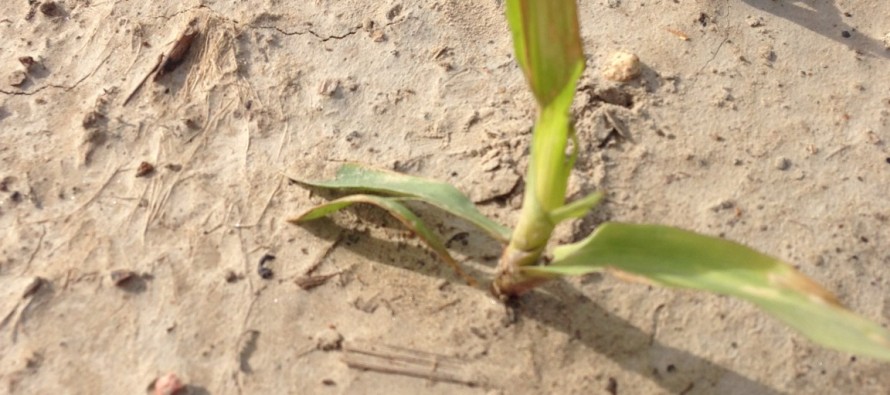- No posts where found
Preplant Intervals for Clethodim Application in Mississippi

Related Articles
- 2010 Soybean And Corn Variety Trial Data 3
- Rice Variety Trial Results For 2010, Plus Rice Research Report 0
- Flag The Technology 0
Latest Tweets
The severity of the glyphosate-resistant (GR) Italian ryegrass problem has varied from year to year, and this year has been challenging. Glyphosate-resistant Italian ryegrass is present in all areas of Mississippi with resistant populations observed in 72 of 82 counties. Italian ryegrass is by no means as problematic as GR Palmer amaranth, but in some fields it can seriously affect a crop early in the season.
Planting in the Mississippi Delta begins with corn. Corn is generally considered to be one of the more competitive crops. Because it emerges quickly, grows rapidly, and shades the middles in a much shorter time than cotton or soybean, corn is often planted to help manage Palmer amaranth infestations. However, corn is not competitive with large Italian ryegrass, which is usually present during the spring in the Mississippi Delta. When corn is planted into standing Italian ryegrass, the aboveground ryegrass plant parts compete with corn seedlings for light and space, and ryegrass roots limit the water and nutrients available to corn seedlings. Our research indicates the benefit to cost ratio for controlling GR Italian ryegrass in fields to be planted to corn is 13:1.
Italian ryegrass is historically not a problem on the clay soils where most rice in Mississippi is grown. However, fields to be planted to rice that contain GR Italian ryegrass should be managed aggressively. In the typical Mississippi rice field where little to no tillage occurs in the spring, the presence of GR Italian ryegrass compromises burndown programs by reducing herbicide coverage on other species. Also, no herbicide labeled for rice is effective for controlling Italian ryegrass, so there are no herbicide options after rice emerges.
Similar to corn, rice is also sensitive to early-season competition from Italian ryegrass. Our research indicates where rice was planted into Italian ryegrass residue, rice seedling density was reduced 25%, height was reduced 33%, and rice maturity was delayed from 7 to 12 days compared with plots that did not contain Italian ryegrass residue. By the end of the season, rice yields were 15% lower in plots that contained ryegrass residue early in the season.
For corn and rice, a spring burndown program for glyphosate-resistant Italian ryegrass should begin with clethodim (12 to 16 ounces of Select Max or 6 to 8 ounces of 2-lb clethodim formulation) applied not less than 30 days before planting. Most corn fields in the Mississippi Delta are too close to planting at this point for clethodim applications. Even though there is still time to safely apply clethodim in some rice fields, most Italian ryegrass in the Delta is currently too large for effective control with clethodim. The preplant interval for clethodim application before planting a grass crop (corn, rice, grain sorghum) is real and should be strictly observed.
The only other reliable postemergence option for Italian ryegrass control is paraquat. Large ryegrass (12 to 24 inches) will require two applications of paraquat (4 pints of Gramoxone SL or 2.67 pints of 3-lb paraquat) spaced 10 to 14 days apart. Atrazine (1 quart) may be added to paraquat applications in fields to be planted to corn or grain sorghum.
For a comprehensive GR Italian ryegrass control program, see Mississippi State University’s Information Sheet 1359 “Herbicide Programs for Managing Glyphosate-Resistant Italian Ryegrass”.






Let me tell You a sad story ! There are no comments yet, but You can be first one to comment this article.
Write a comment